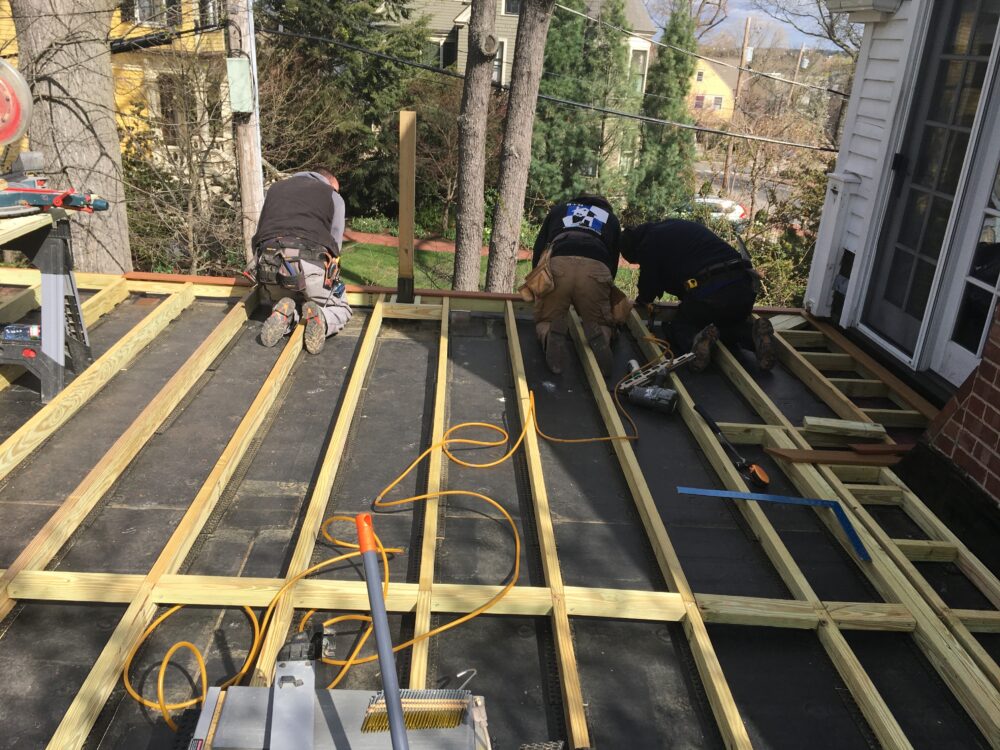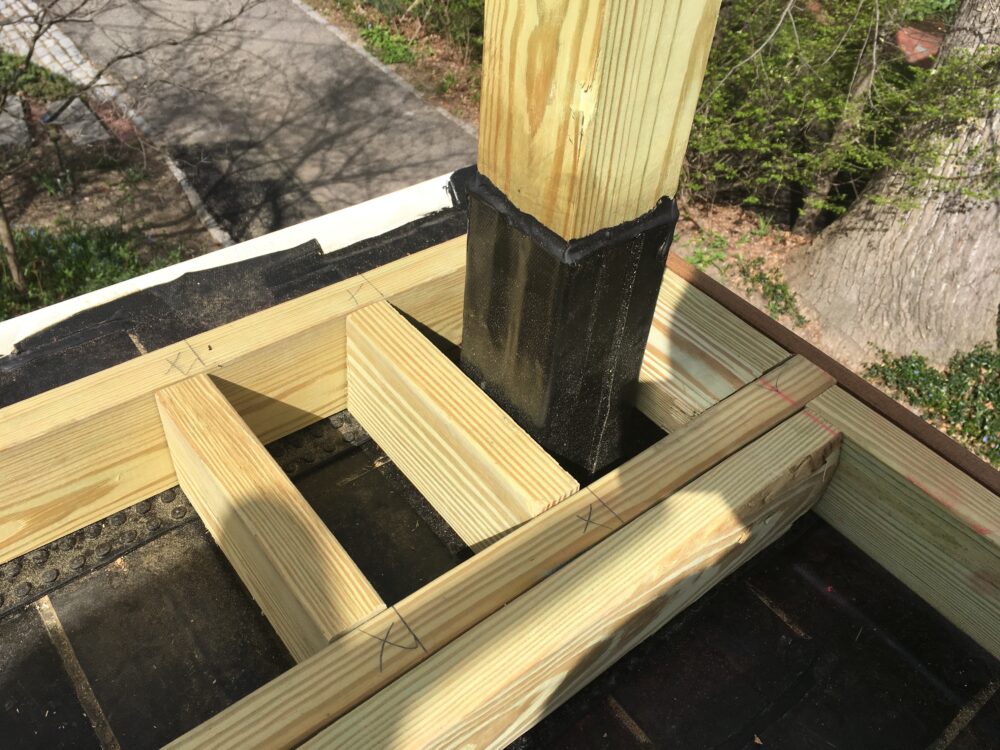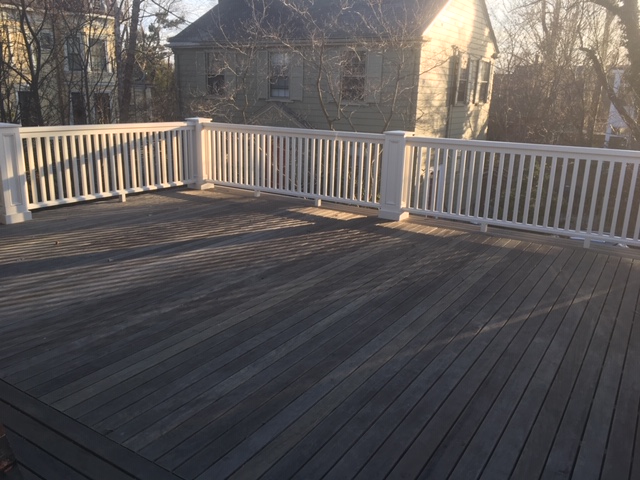Over the last century, taste in outdoor structures has evolved from the traditional covered porch to the open outdoor deck. An open deck is obviously subject to the elements in a way that a roofed porch is not, and its expected service is much reduced because of that fact. Victorian roofed porches over a century old are still performing with minimal maintenance while mid-century open decks have required full replacement at least once. How can we address these durability issues and extend the useful lifespan of the outdoor deck structure?

Two essential keys to a long-lasting deck are good drainage details and durable lumber. Regarding lumber choices, as this second-floor Cambridge deck shows, all the framing was done in treated lumber as it rested directly on the roof itself. This particular roof is covered in EPDM*, a low slope synthetic rubber sheeting. Look closely at the details and notice that the framing is placed on rubber pads, to prevent damage to the roof, with shallow ports cut into the bottom of the framing to allow free passage of runoff.
The EPDM is flashed up around the pressure-treated posts, for a short distance, and then a mahogany “sleeve” Is passed over the post for a counter flashed and finished weatherproof detail. The perimeter of the deck is also mahogany, but the deck itself is done in ipe (pronounced, “epay”), a dense tropical hardwood that is hard to mill but extremely durable, both to the weather and to foot traffic. So dense is this wood that it sinks in water and is fire-rated the same as concrete.
As long-time builders, we pay close attention to the performance of building solutions – – what works, over time. This is especially critical for an exposed outdoor deck structure. The takeaway lesson here is, to take the trouble to do it right, and reap the benefits of extended performance, over time.
*(ethylene propylene diene terpolymer)



